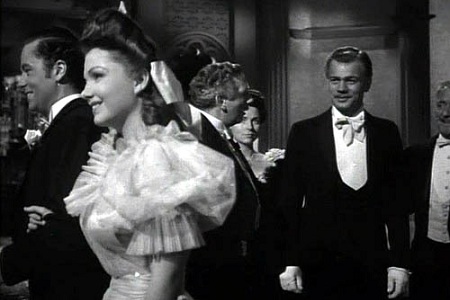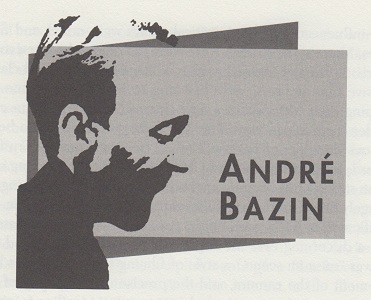
Born: April 8, 1918, Angers, France
Died: November 11, 1958, Paris, France
Just to be scolded by him was a pure delight.
—François Truffaut
The word “auteur” has been applied to filmmakers ever since legal battles were waged in the French film industry of the 1930s to determine who deserved credit for a film. Many critics of the time felt the screenwriter should be considered the original author of a finished movie. Others argued for the contributions of editors and producers. The question was extended beyond the courts in 1951, when film theorist André Bazin founded Cahiers du cinema, a quarterly journal devoted to studying the art of motion pictures and hailing its greatest contributors. In the magazine, Bazin trumpeted the motion picture director as the sole claimant to ownership of films. As the principal instigator of the “auteur theory,” Bazin contended that, since film is an art form, the director of a film must be perceived as the principal artistic creator of its unique and distinctive style. This highly influential opinion formed the persistent notion among movie buffs that the director is the driving force behind every image.
The Film 100
1. W.K. Laurie Dickson
2 Edwin S. Porter
3. Charlie Chaplin
4. Mary Pickford
5. Orson Welles
6. Alfred Hitchcock
7. Walt Disney
8. D.W. Griffith
9. Will Hays
10 Thomas Edison
11. John Wayne
12. J.R. Bray
13. Billy Bitzer
14. Jesse Lasky
15. George Eastman
16. Sergei Eisenstein
17. André Bazin
18. Irving Thalberg
19. Thomas Ince
20. Marlon Brando
21. Louis B. Mayer
22. Greta Garbo
23. Robert Flaherty
24. Lon Chaney
25. Anita Loos
26. George Méliès
27. Adolph Zukor
28. John Gilbert
29. Max Fleischer
30. John Ford
31. William Fox
32. George Lucas
33. Linwood Gale Dunn
34. Eadweard Muybridge
35. Katharine Hepburn
36. Winsor McCay
37. Stanley Kubrick
38. Buster Keaton
39. James Agee
40. Fritz Lang
41. Marcus Loew
42. Cedric Gibbons
43. James Cagney
44. Ben Hecht
45. Ingmar Bergman
46. Humphrey Bogart
47. Leon Schlesinger
48. Louella Parsons
49. Roger Corman
50. Edith Head
51. Bernard Herrmann
52. Gary Cooper
53. Mike Todd
54. Ernst Lubitsch
55. Sidney Poitier
56. Saul Bass
57. Billy Wilder
58. Bette Davis
59. Erich von Stroheim
60. Max Factor
61. Auguste and Louis Lumière
62. Woody Allen
63. Clark Gable
64. David O. Selznick
65. Gregg Toland
66. Lillian Gish
67. William Cameron Menzies
68. Lucille Ball
69. Samuel Rothafel
70. Akira Kurosawa
71. Marilyn Monroe
72. Vittorio De Sica
73. Natalie Kalmus
74. Gene Siskel and Roger Ebert
75. Willis O’Brien
76. Shirley Temple
77. Yakima Canutt
78. Sam Peckinpah
79. Jackie Coogan
80. Federico Fellini
81. Leni Riefenstahl
82. Steven Spielberg
83. Sam Warner
84. Jean-Luc Godard
85. Robert De Niro
86. Fred Astaire
87. Francis Ford Coppola
88. Ted Turner
89. Clint Eastwood
90. Dalton Trumbo
91. Dennis Hopper
92. Richard Hollingshead
93. Melvin Van Peebles
94. John Chambers
95. Mack Sennett
96. Martin Scorsese
97. Karl Struss
98. Busby Berkeley
99. John Hubley
100. John Cassavetes
As university clubs and film societies sprouted up in the 1950s, a new generation of film lovers closely followed Bazin’s criticisms, and an underground critical movement was born. His viewpoints redefined a set of critical tools for the people who watched movies, and his reviews of contemporary films, as well as his lengthy examinations of techniques used in classic films, formed the foundation for a new way to evaluate and appreciate filmmakers.
Others influenced by Bazin’s critical essays were critics and filmmakers themselves. Many of the French New Wave directors, who often congregated in the Paris theaters of Henri Langlois while viewing selected classics from his extensive film archives, were listening to Bazin at the same time they were shaping their ideas about a new cinema. Among the film critics who came under his tutelage were four men who would go on to become the most famous directors of postwar French cinema: François Truffaut, Jean-Luc Godard, Jacques Rivette and Claude Chabrol. These young enthusiasts took to the streets with 16mm cameras and applied to filmmaking their own vision, largely based on the aesthetics articulated by André Bazin.
A prolific writer, Bazin was also a consummate voyeur who dissected each film with a discerning eye. An important principle championed by Bazin’s writings was “mise-en-scène,” a style of filming that emphasizes long takes, the placement of the camera and the precise choreography of action. In mise-en-scène sequences, several elements come together to give a scene the director’s personal touch: lighting, color, scenery, the proximity of actors to each other, the camera’s movement and angles and transitions within the same frame. More than any other factor, the placement and use of these elements speak to the control of a director over his vision, Bazin emphasized, and though them the style of an artist emerges. When successfully executed, the residual effect of this technique is the all-encompassing feeling that a whole world is in motion far beyond the reaches of the frame. Bazin said, “The camera should be able to spin suddenly, without picking up any holes or dead spots in the action.”
An effective example of mise-en-scène appears in Orson Welles’s film The Magnificent Ambersons (1942). A conversation between two gentlemen begins at a fireplace, moves across a crowded dance floor, picks up two other interested parties and moves into another room. In one continuous shot, the focus of the discussion turns away from the two men and zeroes in on a young couple who speak a few lines before joining the dancing throng. The scene, completely choreographed to happen in a single take, ebbs and flows with the intimate close-ups of people talking and the establishing distance shots of the ballroom. Another memorable mise-en-scène shot is witnessed in Martin Scorsese’s Goodfellas (1990), when a man escorts his girlfriend through the back door of a busy nightclub and winds through a maze of kitchen helpers, coatcheck girls, bouncers and bartenders to find their seats in front of the performers’ stage. Careful planning and skillful direction are required to maneuver through dozens of actors who genuinely appear to be unaffected by the couple. The scene lends a believability through its utter complexity.
Bazin argued that mise-en-scène compositions are preferable to the radical montage scenes of Sergei Eistenstein, for they show that the director was planning all cuts before the editing stage. Bazin pointed to the works of Jean Renoir, Erich von Stroheim, Orson Welles and Ernst Lubitsch as the finest examples of mise-en-scène direction, and a renewed interest in their careers soon followed.
He particularly revered directors who succeeded in experimenting and improving their methods despite the strict budget constraints, stock players, union crews, script revisions and impossible deadlines imposed by their producers. Taking his lead from film critic James Agee, Bazin argued that the highest purveyors of the form were the fiercely independent American directors who continued to stamp their personalities on films in the midst of the assembly-line mentality of Hollywood’s studio system. His respect ran deepest for film pioneers like D.W. Griffith, Ernst Lubitsch and Charlie Chaplin, and Bazin’s analysis of their accomplishments gave film lovers a greater understanding of their influences. A sudden interest in the films of Alfred Hitchcock, John Ford, William Wyler and particularly Howard Hawks stemmed from Bazin’s unique perspectives on their careers; throughout the 1960s, film appreciation classes and revival theaters showcased the work of these directors, and many of these “auteurs” were finally honored for their achievements.
Appropriately placed on this list as the highest-ranking nonfilmmaker, André Bazin had a significant impact on cinema as both a theorist and a critic. He completely turned around all thinking concerning the art of film, setting criteria by which film buffs could evaluate the efforts of an entire generation of filmmakers. His adamant support of the auteur theory remains the most pervasive position in film criticism; almost all films seen today are viewed with a sense of a sole originator, the director, as an omnipresent force driving the entire production. This predisposition has cast much notoriety on the directors who have developed their craft in the wake of Bazin’s influence. Today, the director takes the credit and the director takes the blame. Contemporary directors are often more popular and more controversial than the cast or crew of their films, and many, such as Stanley Kubrick, Oliver Stone, Spike Lee, Francis Ford Coppola and Martin Scorsese, are now known to audiences by their distinctive styles.
To read all the republished articles from ‘The Film 100,’ go to Reintroducing the Film 100 here on Keyframe.




